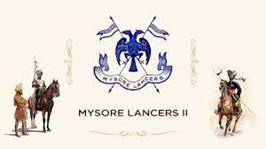Mysore Lancers & Haifa War
Mysore Lancers & Haifa War

The Battle of Haifa paved the way for creation of modern Israel. History remembers the Haifa war as the true turning point in ending the Ottoman empire which helped in creating the country of Israel, which even today remembers and celebrates the day as the day of liberation.
On September 23, 1918 the Imperial Service Cavalry Brigade was ordered to capture Haifa. The area between Kishon River and the slopes of Mount Carmel was well defended by Ottoman gun emplacements and artillery.
The brigade’s Jodhpur Lancers were tasked to capture this position, while the Mysore Lancers moved around to attack the town from the east and north. A squadron of the Mysore Lancers and a squadron of the Sherwood Rangers Yeomanry, supported by B Battery, Artillery Company, attacked the Austrian battery of light field guns on the slopes of Mount Carmel.
The squadron of Mysore Lancers had moved into position by climbing up a steep track to capture and silence the guns, while the Jodhpur Lancers launched the main mounted attack on the rear-guard of German machine gunners, which blocked the road 3.2km on from the redoubt captured the day before by the Light Car Patrol. The Jodhpur Lancers charged the Ottoman position, crossing the Acre railway line, but came under machine gun and artillery fire. The charge was further obstructed by quicksand on the river banks, so they manoeuvred to the left onto the lower slopes of Mount Carmel.
The regiment secured the position capturing thirty prisoners, two machine guns, two camel guns and opening up an access route into Haifa. The Jodhpur Lancers continued their charge into the town, surprising the defenders.
Mysore Lancers who had been giving fire support to the attacking regiment, mounted and followed them into the town. Together the two regiments captured 1,350 German and Ottoman prisoners, including two German officers, 35 Ottoman officers, 17 artillery guns including four 4.2 guns, eight 77mm guns and four camel guns as well as a 6-inch naval gun, and 11 machine guns. Their own casualties amounted to eight dead and 34 wounded. 60 horses were killed and another 83 injured.
